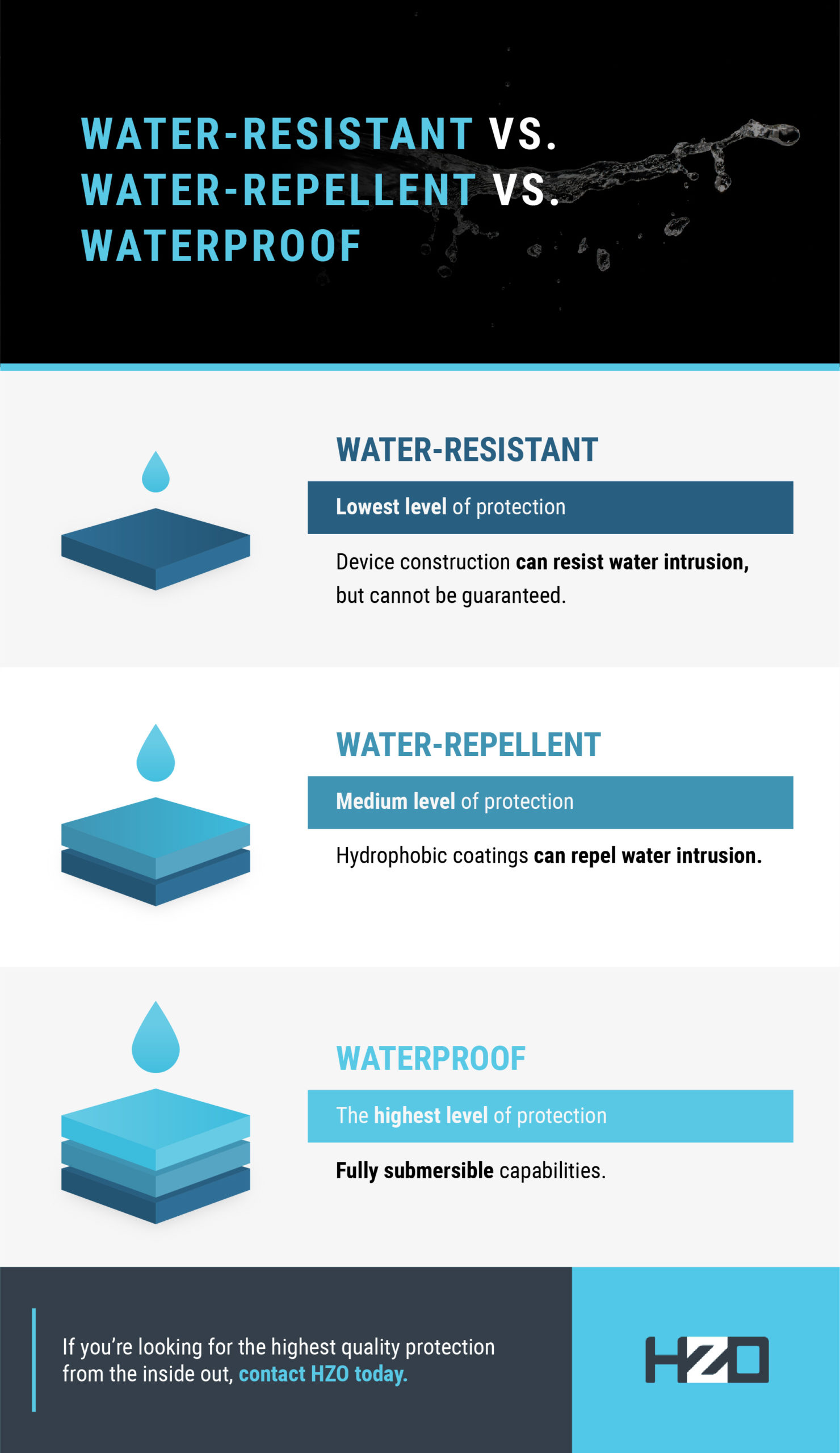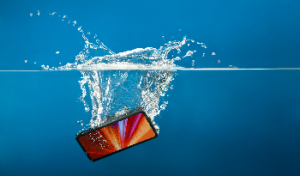Water-resistant vs Water-repellent vs Waterproof: What’s the Difference?

We all see references to waterproof devices, water-resistant devices and water-repellant devices being thrown around on electronic products. The big question is: What’s the difference? There are a lot of articles written on this topic, but we figured we would throw in our two-cents as well and take a closer look at the differences between all three terms, with a specific focus on the world of devices.
First of all, let’s start with some quick dictionary definitions of waterproof, water-resistant, and water-repellent, as given by the Oxford English Dictionary:
- Water-resistant: able to resist the penetration of water to some degree but not entirely
- Water-repellent: not easily penetrated by water, especially as a result of being treated for such a purpose with a surface coating
- Waterproof: impervious to water
What Does Water-Resistant Mean?
Water-resistant is the lowest level of water protection of the three. If a device is labeled as water-resistant it means that the device’s construction makes it more difficult for water to get inside of it, or possibly that it is coated with a very light substance that helps improve the device’s chances of surviving an encounter with water. Water-resistant qualities are great for products such as watches because they help those products withstand light rain or washing your hands.
What Does Water-Repellent Mean?
Water-repellent coatings are the next step up from water-resistant coatings. Devices labeled as water-repellent have properties that repel water from them, which makes them hydrophobic. Water-repellent devices have a better chance of surviving a watery encounter. Most have thin-film nanotechnology, which can coat the inside and outside of an electronic device. Many companies claim water-repellency, but the term is heavily debated because a durable water repellent is rare and because of all the questions and unpredictable elements associated with it.
What Does Waterproof Mean?
Defining “waterproof” is simple, but the concept is more complicated. Currently, there is no established industry standard to classify a device as waterproof. The closest thing currently available, as far as a rating scale is concerned, is the Ingress Protection Rating scale (or IP Code). The IP Code assigns items a rating from 0-8 in terms of how effective the device is at keeping water from entering into it, a process called the ingress of water. Obviously, there is one major flaw in this rating system: What about companies, like us here at HZO who are not concerned about keeping water out of a device in order to save it from water damage? Our coatings allow water inside devices, but the waterproof material we coat the devices with protects them from any possibility of water damage. HZO’s services have a different intention than the effect the IP scale can measure. Still, our coatings help you protect your electronic devices from water damage.
Companies take a measured risk when labeling a product as waterproof. Most consumers assume that waterproof is a permanent condition. Still, devices exposed to “waterproofing” can face water damage in certain situations.
Using the term waterproof can also be considered a risky move for many companies. This is because the term waterproof usually communicates the idea that this is a permanent condition, and that whatever has been ‘waterproofed’ will never fail due to contact with water–no matter the situation.
With all the controversy surrounding the correct use and end results associated with these terms, it’s no wonder that many people use them incorrectly. It’s also not surprising that the products labeled as water-resistant, water-repellent, or waterproof are often misrepresented due to incorrect labeling. With how far technology has come since these terms were first being used, the words themselves almost need new definitions. We also need a standard to measure a device’s waterproof qualities and represent the possibilities and kinds of technology like HZO that are commercialized and available to device makers now. The power of our coatings can’t be measured by this outdated scale.
What About Splashproof?
A splashproof product has a limited ability to resist water damage and is not immersible. For example, if you take your splashproof headphones with you on a run, they’ll be safe from sweat or a few droplets from your water bottle, but they won’t survive a fall into a puddle.
Using the IP scale can demonstrate the differences between splashproof vs. waterproof products. Most waterproof electronics have an IP67 rating. A product qualifies as splashproof if it has an IP44 rating.
The scale from splashproof to waterproof includes:
- IP44. An IP44 product withstands splashes from any direction, making it splashproof. These products are safe from solid materials larger than 1 millimeter.
- IP55. These products resist low-pressure jets from any direction. IP55 products also have some protection against dust.
- IP66. An IP66 product can withstand strong jets from any direction and completely protects against dust.
- IP67. These products are suited for complete immersion at a depth of 1 meter for 30 minutes. This distinction qualifies them as waterproof. They also have total protection against dust.
An HZO Protected World
Because of the advanced level of protection available for electronics that protect them from water, sweat, other liquids and corrosion, the need for new standards is necessary to raise the bar in the minds of consumers. That’s why HZO is seeking to create an HZO Protected World, and asking for people everywhere to help us tell the device makers of the world that we want electronics that have better, more reliable protection. Protection from the Inside Out.
 Mallory McGuinness
Mallory McGuinness
As a veteran writer with over a decade of writing experience, Mallory McGuinness has spent the last two years at HZO learning about coating technology from the best minds in the industry. Professionally, Mallory is especially interested in the process of problem-solving and watching how the engineering team develops solutions that ensure business requirements are met. In her free time, you can find Mallory walking her dog Ebbie, fueling up on coffee, watching the Simpsons, and referencing the Simpsons.
All of Mallory’s blogs are reviewed for accuracy before publication.
Related
Discover how HZO can protect your product

